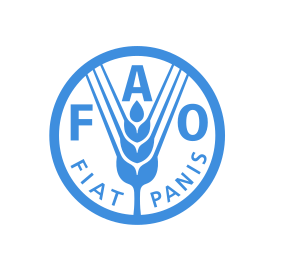EBRD, FAO and IEA Join Forces to Help Climate Technology
Published on by Water Network Research, Official research team of The Water Network in Government
EBRD and FAO, together with the International Energy Agency (IEA), have developed a methodology to help countries and investors track climate technology trends and uptake.



The step-by-step approach in a new guide, Adoption of climate technologies in the agrifood sector, helps decision-makers in assessing the market penetration of diverse climate technologies, as well as relevant policy and investment opportunities.
“Better data collection and analysis in this area will help us make smarter investments in energy efficiency, renewable energy and climate resilience,” says Gianpiero Nacci, associate director of the EBRD’s energy efficiency and climate change team.
“It will also help countries attract climate finance to advance their climate change adaptation and mitigation efforts.”
Food production and supply chains consume nearly a third of global energy as well as emit almost a quarter of the world’s greenhouse gases.
The adoption of climate-smart technologies and practices along these value chains aims to help minimise carbon emissions and improve productivity to make better use of the earth’s natural resources.
“The world’s population is growing, diets are changing, competition over natural resources is rising and the weather is increasingly unpredictable. It’s imperative we find sustainable ways to produce more food using less water, land and energy,” says Martin Frick, director of FAO’s climate, energy and tenure division.
“The transfer of green technologies at all levels, from small-scale farmers to large food-processing companies, is key to building resilient food and agriculture systems better adapted to our changing climate.”
Systematic approach
While it is relatively easy to collect and assess data on climate technology trends and adoption for the energy and transport industries, such data for the agrifood sector is virtually non-existent, says the EBRD. This led to development of the four-step methodology looking specifically at agricultural production and food processing.
The EBRD and FAO first applied the methodology in Morocco. The plan now is to roll out the approach in Kazakhstan and the Kyrgyz Republic, and eventually in other countries.
Ideally, countries will apply the methodology regularly, as much can change over time – from local country contexts and markets, to international priorities, investor interests and policy.
“With this work, we’re trying to look long term and focus on what the social, economic and environmental issues preventing climate technology adoption are now and could be later,” says Alessandro Flammini, an FAO natural resources officer and one of the publication’s co-authors.
Read more: Global Trade Review
Media
Taxonomy
- Water Access
- Technology
- Reuse
- Climate Change
- Climate Change Adaptation
- Climate Change Resilience
- Climate Protection
- Renewable Energy
- Renewable Energy
- Climate
1 Comment
-
"Climate technology" is based on minimizing carbon emissions and increasing productivity. And this will allow "better use of natural resources"? No matter how hard we try, and still with the growth of the population, the pressure on natural resources should increase. These are very small, microscopic steps towards climate mitigation. Delays the death of the planet for one, two days. It is necessary to find the main cause of climate change. And it is found.
It is high time to look at water as a special kind of matter. Water is not just a fluid working reagent for production, energy generation, human needs. Its properties have not been disclosed so far. According to extensive materials on the properties of water, it can be determined that rotating in a continuous cycle of the cycle, water undergoes numerous transformations. The main essence of these transformations inherent in nature, or rather created by water itself, lies in its purpose. Millions of years of water formed in a single symbiosis with living beings and vegetation. It not only developed and promoted life on the planet, but itself is a derivative of biota. Her path has stabilized in the mandatory passage through food chains of flora and fauna. The way of water through juices, blood, secretions, breathing, transpiration provides its many and varied transformations. A single result of the transformations are evaporation from a great variety of biological objects. And each molecule of these vapors is an original construction, structure. Summing up in the clouds of the atmosphere, these molecules create a strictly individual program, precipitate in specified places and in specified volumes, developing each biota area with their doses at a given time. So the world order was polished, each territory had its own strict regime of water supply.
Man, with his needs, began to use water for other purposes. Water lost its main element in its movement. Clouds - clouds - precipitation - transformations in organic - evaporation - clouds. In this chain, "transformations in organic" are rapidly declining with the development of civilization. Clouds - clouds - evaporation - clouds. Falling precipitation, it immediately evaporates from asphalt, arable land, artificial reservoirs. The total area of the alienated territories is 63% according to open sources of information. Each hectare of fertile land contains 20 tons of underground living creatures, which converts the water of precipitation into pairs of respiration, excretion and evaporation through plant leaves.
The man in communal and industrial processes produces even more reduced fumes. It must be assumed that the quality of the evaporation from the organic and from the asphalt is very different from each other. But, even without paying attention to this unproven, so far, fact, it is enough to take into account the increase in the volumes and rates of artificial fumes. There is also no exact data on such volumes and speeds. However, the logic of the given facts gives the right to such an assumption. The destroyed connections and the interaction of organic fumes have led to a change in all the laws of atmospheric transformation. Confirmation of this hypothesis is the current state of the climate. It's changing. There was a failure in the water supply system in the area. Somewhere downpours and floods, somewhere a drought and fires. Natural disasters in various parts of the world, warn humanity about the approaching cataclysm.
Mankind, has gone on the wrong path, engaging in private and small elements of the main reason - reducing the emission of carbon dioxide, "green technology" and so on small things. This intensively destroys the last areas under arable land, new reservoirs, new landfills and dumps.
If a person has a desire to save the life of the planet, it is necessary to urgently develop a new concept for climate. It is necessary to restore the water to its natural functions. Stop all kinds of works with flooding new areas for new hydroelectric power stations, building canals and river turns, transferring to drip agriculture, planting roofs and walls of all buildings, and building new ones underground and under water. Stop the destruction of the soil. Eliminate dumps and dumps. Create a new ideology to reduce water consumption in all scales from production to each person. Otherwise, the planet will be swept away by humanity.